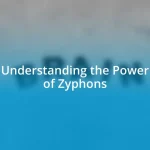Key takeaways:
- Mermaids symbolize the duality of freedom and peril, reflecting human desires and fears across different cultures and narratives.
- Cultural interpretations of mermaids vary significantly, ranging from nurturing figures in African traditions to dangerous sirens in European folklore, highlighting societal values and human emotions.
- Engaging with the mermaid community through discussions, creative expression, and local events enriches understanding and appreciation of mermaid mythology.

Understanding the Mermaid Phenomenon
The phenomenon of mermaids captivates our imaginations for so many reasons. I remember the first time I encountered a story featuring mermaids, the way it whisked me away to a world where reality bends and water glistens with magic. Who hasn’t gazed out at the ocean and wondered if there could be more beneath the surface?
What truly intrigues me is how these mythical creatures often embody our desires and fears. They represent both freedom and peril, beauty and danger—an alluring duality that resonates deeply. Have you ever felt both drawn to and terrified by the unknown? That’s the essence of mermaids for us; they symbolize the mysteries of life that we both yearn to explore and hesitate to confront.
As I delve deeper into the lore of mermaids, it strikes me how cultures worldwide have their spin on these figures, reflecting their own values and fears. For instance, in some tales, mermaids are nurturing, while in others, they lure sailors to their doom. This variation makes me think: what does the mermaid myth reveal about our humanity? I find these diverse interpretations a treasure trove of insights into how we view beauty, danger, and the unknown in our own lives.

Historical Background of Mermaids
The historical roots of mermaid mythology stretch back centuries, weaving an intricate tapestry across cultures. I find it fascinating how these enchanting figures emerged in ancient texts and folklore. From Babylonian tales to Greek myths, mermaids have captured the human imagination, often representing the complex relationship between humanity and the sea. I still recall a moment from my childhood when I first read about the Sirens in Greek mythology, their haunting songs leading sailors to their doom—a perfect blend of beauty and danger.
Here are some key points that highlight the historical background of mermaids:
- Ancient Civilizations: Stories of mermaid-like beings date back to civilizations such as the Assyrians and Babylonians, illustrating humanity’s long fascination with the ocean.
- Literary References: Literary references, like in Homer’s “Odyssey,” showcase how mermaids—often called Sirens—were seen as both mesmerizing and threatening.
- Cultural Interpretations: In different cultures, mermaids take on various forms, from the nurturing water spirits of some African tribes to the vengeful entities in European folklore.
- Artistic Representations: Throughout the Renaissance, mermaids began to appear more frequently in art, highlighting their enduring allure in the Western imagination.
- Victorian Era Influence: During the Victorian era, mermaids represented both romantic ideals and societal fears about female independence, reflecting deeper cultural tensions.
Unraveling these threads makes me appreciate how deeply woven mermaids are into our collective psyche. Each story holds a mirror to our evolving relationship with nature, gender, and the mysteries that lie beneath the waves. It’s these connections that keep the mermaid myth alive for me, transforming them from mere folklore into a profound exploration of human nature.

Cultural Interpretations of Mermaids
The interpretation of mermaids varies significantly across cultures, reflecting diverse societal values and human emotions. For example, I was enthralled to learn about the Mami Wata goddess revered in many African cultures. She embodies beauty, healing, and the complexities of human relationships, showcasing a nurturing side of mermaids that contrasts sharply with the perilous figures of Western myths. Doesn’t it make you think about how culture shapes our understanding of femininity and strength?
In contrast, the European perception of mermaids often leans towards the darker side. I can still feel the chilling sensation when I read about the mermaids in Scandinavian folklore, whose enchanting songs lead sailors to their doom. It evokes the contemplation of love and betrayal, intertwining beauty with mortal danger. How often do we encounter situations where beauty masks peril in our lives?
Similarly, in Asian cultures, mermaids take on unique interpretations. The Japanese “ningyo” signifies a fish-like creature that brings misfortune if caught. I remember feeling a sense of intrigue as I dug into the concept of luck intertwined with these mermaid legends. It makes me ponder: how do our cultural narratives shape our fears and hopes regarding the unknown?
| Culture | Mermaid Interpretation |
|---|---|
| African | Mami Wata symbolizes beauty, healing, and relationships. |
| European | Mermaids often represent danger and betrayal. |
| Asian | Ningyo signifies luck and misfortune depending on context. |

Mermaids in Literature and Art
When I delve into mermaids in literature, I can’t overlook Hans Christian Andersen’s “The Little Mermaid.” This iconic tale presents a haunting narrative of sacrifice and longing, making me reflect on the delicate balance between desire and reality. I still remember how I felt drawn to the mermaid’s yearning for a human soul, which sparked intense emotions within me—it’s a wonderfully tragic story that resonates across generations.
Art has also played a significant role in depicting mermaids, from the whimsical illustrations of John William Waterhouse to the stark portrayals of Edvard Munch. I find it intriguing how these artistic representations often capture the ethereal quality of mermaids, blending beauty with melancholy. Looking at such paintings, I sometimes wonder—what do these artistic choices say about society’s views on women and the ocean’s untameable nature?
Moreover, I’ve noticed that modern interpretations of mermaids in pop culture often embrace empowerment. Take “Pirates of the Caribbean,” for instance. The mermaids there are fierce and strong, challenging the victim narrative that has long surrounded them. Watching those scenes, I felt a surge of admiration for these portrayals; they remind me of how myths can evolve, reflecting contemporary ideals about femininity and power in a captivating way.

Psychological Perspectives on Mermaids
The psychological perspectives on mermaids open a fascinating window into our collective psyche. When I think about their allure and the fear they evoke, I find it striking how they often mirror deep-seated human emotions such as longing, fear, and the quest for identity. Mermaids can symbolize the duality within us—the enchanting beauty and the shadow of danger. Hasn’t each of us felt drawn to something beautiful yet terrifying at some point in our lives?
From a psychological perspective, mermaids serve as archetypes. Carl Jung, for instance, would likely see them as representations of the anima, the feminine aspect of the male psyche. It resonates with me when I consider how these figures encapsulate a blend of attraction and danger, reflecting our struggles with desire, the unknown, and our own inner conflicts. I recall moments in my life where I found myself captivated by a situation that, looking back, I knew wasn’t good for me, much like a sailor lured by a siren’s song.
Moreover, mermaids can also represent the journey of self-discovery and transformation, as portrayed in various narratives. I often reflect on how their stories echo our need to embrace change and the fear of losing ourselves in the process. For example, in many tales, mermaids trade their voice for legs—a powerful metaphor for the sacrifices we make to fit into societal norms. Isn’t it fascinating how these mythical beings help us explore our own desires for freedom and authenticity while grappling with the constraints that often hold us back?

Practical Tips for Mermaid Enthusiasts
For those diving into mermaid lore, I recommend starting with a good mixture of classic and contemporary materials. I once spent an entire weekend comparing traditional stories like “The Little Mermaid” with modern reinterpretations, and it was eye-opening. It made me realize how versatile mermaids are as symbols—they evolve with our cultural narratives while still holding onto their enchanting roots.
Engaging with the community also enhances the experience. I joined a local mermaid enthusiasts’ group, and honestly, sharing thoughts and interpretations with others amplified my understanding. It’s fascinating to hear different perspectives—like how some see mermaids as nurturing figures, while others view them as warning sirens. Have you ever participated in discussions where the interpretations just blew your mind? Those moments remind me how rich and layered this mythology can be.
Another practical tip that I’ve found invaluable is to embrace creative expression. Try writing your own mermaid story or sketching what you imagine a mermaid to look like based on your research. This hands-on approach allows you to form a deeper connection with the mythology. I remember when I wrote a short poem about a mermaid’s longing—putting my emotions on paper connected me to the essence of these mythical beings in a way that mere reading never quite could.

Fostering a Mermaid Community
Fostering a mermaid community can be a delightful journey, and I genuinely enjoy exploring this subject. When I attended a local mermaid meetup, I was surprised by how many people shared my enchantment and passion. What was even more exciting was hearing their personal experiences with mermaids, which brought a fresh perspective to the stories I thought I knew inside out. Have you ever found yourself in a conversation that sparked new ideas for your own understanding?
Online forums and social media groups can also play a significant role in building this community. I remember joining a Facebook group dedicated to mermaid enthusiasts, where everyone shared art, stories, and fascinating facts. It was refreshing to see varied interpretations and how people connect deeply with mermaids in different ways. Isn’t it remarkable how a mythical creature can bring together so many diverse voices under one shared fascination?
Moreover, organizing local events or workshops can cultivate a sense of belonging. A few years ago, I took part in a mermaid-themed painting night, and it was an extraordinary experience. We all painted our interpretations of mermaids while sharing our favorite stories, creating a vibrant tapestry of creativity and camaraderie. It made me realize how these simple gatherings can nurture friendships and inspire a collective love for something truly enchanting. Have you ever attended an event that deepened your appreciation for a topic you love?













